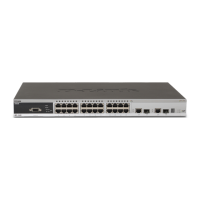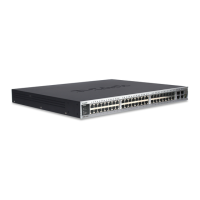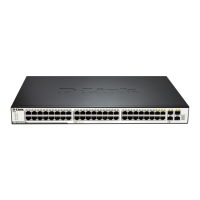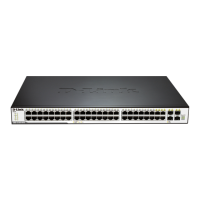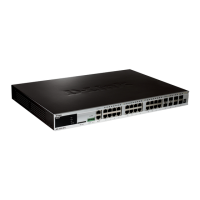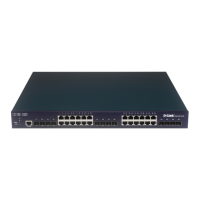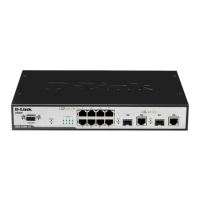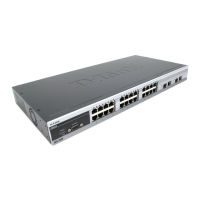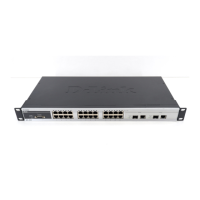
Do you have a question about the D-Link xStack DES-3526 and is the answer not in the manual?
Includes saving configurations, rebooting the switch, and resetting to factory defaults.
Configures switch port settings such as speed, duplex, flow control, and learning.
Configures port security features like MAC address limiting and lock address mode for specified ports.
Handles downloading firmware, managing configurations, and showing firmware information.
Sets the STP version and configures global STP parameters like maxage and hellotime.
Configures STP on a per-port basis and manages STP instance IDs and VLAN assignments.
Manages unicast and multicast MAC address entries in the forwarding database (FDB).
Configures broadcast and multicast traffic control, including thresholds for storm detection.
Configures bandwidth control on ports, setting transmit and receive rates.
Manages traffic scheduling for queues and maps 802.1p priorities to hardware queues.
Configures port mirroring, defining mirror and source ports, and traffic direction (RX/TX/both).
Manages VLANs by creating new VLANs and deleting existing ones from the switch.
Creates, deletes, and configures link aggregation groups, defining master ports and member ports.
Creates IP-MAC binding entries, associating an IP address with a MAC address and ports for security.
Configures the switch's IP interface, setting IP address, VLAN, state, and protocol.
Configures DHCP/BOOTP relay, managing IP destinations, option 82, and policies.
Enables, disables, and configures 802.1x authentication modes and parameters for ports.
Creates and configures access profiles with rules based on packet header information for traffic filtering.
Enables/disables SSH and configures the authentication mode (password, publickey, hostbased).
Enables/disables SSL and manages available ciphersuites for secure communication.
